I love Christmas! I have known for many decades that it is NOT the day of Jesus’ Birth. In our home, however, on Christmas Eve we have always read the Birth of Christ’s story from Matthew 1:18-25 and from Luke 2:1-20 in honor of the special day that has been set aside to recognize the birth of the Messiah, the Anointed One.
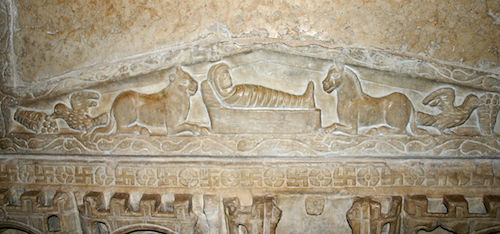
CLICK TO READ Article: When Was Jesus Born?
And my family KNOWS that the true Gift of Christmas is the Christ Child and not just the presents they get.
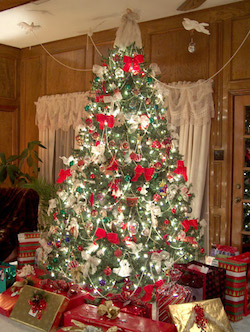
 I love our Christmas trees! They are always big, tall, unwieldy and have lots of lights and ornaments hung strategically on their prickly, bowing branches. And an angel or a star is always put right at the apex of the tree by my tall husband. I love how my husband and now my sons and son-in-law always dress up like Santa Claus and appear on Christmas morning with “ho, ho, ho’s,” pipes and stuffed bellies in their red and white costumes to the laughter of big ones and the delight of little ones. Notice Santa’s shoes rather than boots in this 1919 English Postcard of Father Christmas.
I love our Christmas trees! They are always big, tall, unwieldy and have lots of lights and ornaments hung strategically on their prickly, bowing branches. And an angel or a star is always put right at the apex of the tree by my tall husband. I love how my husband and now my sons and son-in-law always dress up like Santa Claus and appear on Christmas morning with “ho, ho, ho’s,” pipes and stuffed bellies in their red and white costumes to the laughter of big ones and the delight of little ones. Notice Santa’s shoes rather than boots in this 1919 English Postcard of Father Christmas.
I love the home decorations of elves and reindeer and mistletoe and cinnamon/pine-smelling candles and Santa Clauses and the reading of The Night Before Christmas written on Christmas Eve 1822 by Clement Moore, the professor of Oriental and Greek literature at the General Theological Seminary in New York City.

I love every thing about Christmas!
BUT…most everything about our Christmas is not Christian. Uh-oh.

The name “Christmas” comes from two words: “Christ” and “Mass.” The first word “Christ” is obvious and comes from the Greek word Christos. The word “mass” comes from the Latin word massa through the Greek word maza, meaning “lump, yeast dough, crowd.” In English in the 1580’s the word “mass” came to mean “large amount, quantity.” So Christmas is a “a large amount of people gathered around Christ.” Some may only go to service/mass on Christmas and Easter. Our son Blake who is a pastor calls these people “Chreasters.”
In the first centuries of the Christian church, Christians never celebrated the birth of Jesus. That holy day (holiday) did not happen until about 354 AD when it was first listed as a Roman celebration in Filocalus’ Chronographia. This means that until Christianity became the state religion of Rome under Theodosius in c. 380 AD, Christians did not celebrate Christmas at all. And the December 25 date was the culmination of a Roman mid-winter festival called the Saturnalia dedicated by human sacrifices to the god of Time Saturn. It was a time to cut loose where slaves became masters for a week and there was topsy-turvy revelry of all kinds, good and bad.
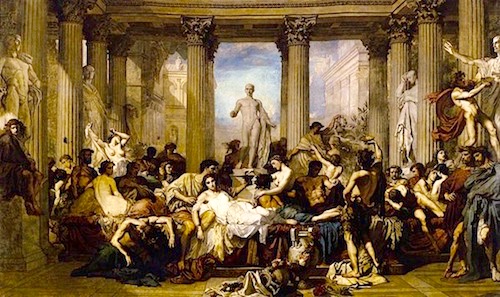
Our Christmas trees were brought to America by the Germans who had adopted the tree in the 1500’s as a symbol of “everlasting” (Jesus as Everlasting) and brought it into their homes at Christmas time. But the “evergreen” palm tree in ancient Egypt and the fir trees of northern Europe had symbolized, and often been worshipped, as trees of the gods.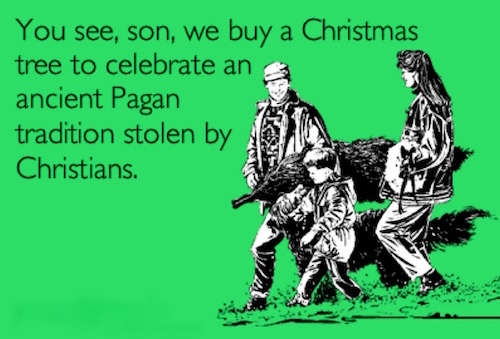

People have always brought flowers and other gifts of nature into their homes. Often they became or were pagan symbols of their many gods. Sometimes they were simply beautiful. The winter holly so loved of the Teutonic gods and the ancient Roman laurel, the Celtic/Druid mistletoe all were brought into homes in the wintertime to honor gods and because they gave natural life to a barren time of year. Those symbols were grafted into our winter Christmas decorations.
 Hertha (aka Nertha) was an ancient Norse goddess of the fireplace, the hearth. The importance of fire and the fire “place” goes way back to the dawn of man when fire was his only comfort against nature, the means of his edible meat and his protection and weapon against the foes of nature. One cannot forget that “fallen man” was barred from re-entering his Edenic state by fire: “After (God) drove the man out, he placed on the east side of the Garden of Eden cherubim and a flaming sword flashing back and forth to guard the way to the tree of life.”
Hertha (aka Nertha) was an ancient Norse goddess of the fireplace, the hearth. The importance of fire and the fire “place” goes way back to the dawn of man when fire was his only comfort against nature, the means of his edible meat and his protection and weapon against the foes of nature. One cannot forget that “fallen man” was barred from re-entering his Edenic state by fire: “After (God) drove the man out, he placed on the east side of the Garden of Eden cherubim and a flaming sword flashing back and forth to guard the way to the tree of life.”
It would take us far afield if the reasons for that act of God were to be explored in this article. So I forego. But the importance of the fire place has been enshrined in our saying, “Hearth and Home.”
 Santa Claus, a composite of many ancient heroes and gods who rode their horses across dark night skies, rides his reindeer-driven sleigh across the heavens, lands onto rooftops and comes down the chimney into the hearth/the heart of the home. Santa Claus is, also, called St. Nick. Now we do have a Christian overlay to the jolly old man. Nicholas aka Nikolaus, (c. 270 – c. 343 AD) from Myra in Turkey, was a very rich man whose parents had died when he was young and left him their money. He was a Christian and spent much of his inheritance giving gifts to poor children—the origin of our gift giving at Christmas.
Santa Claus, a composite of many ancient heroes and gods who rode their horses across dark night skies, rides his reindeer-driven sleigh across the heavens, lands onto rooftops and comes down the chimney into the hearth/the heart of the home. Santa Claus is, also, called St. Nick. Now we do have a Christian overlay to the jolly old man. Nicholas aka Nikolaus, (c. 270 – c. 343 AD) from Myra in Turkey, was a very rich man whose parents had died when he was young and left him their money. He was a Christian and spent much of his inheritance giving gifts to poor children—the origin of our gift giving at Christmas.
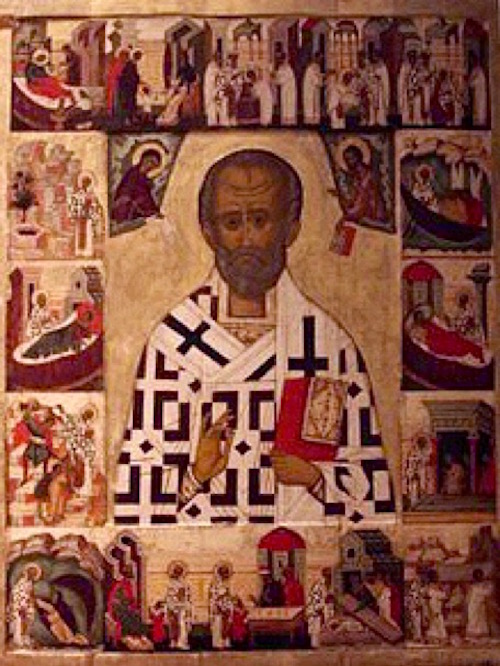
 But one can see the organized Christian church’s overlay of Christian beliefs on to pagan beliefs. Why? Why did that happen? The wise or unwise men of ancient/medieval/modern times who led the Church of Christ into uncharted places of fixed pagan gods/goddesses and mores were obviously trying to make the Christian Gospel (the Good News) of forgiveness of sins and redemption through Jesus the Christ as palatable and acceptable to pagans as they could, especially where the important, looked-forward-to celebrations of the pagan year were concerned. So they Christianized pagan festivals. Simple. Right?
But one can see the organized Christian church’s overlay of Christian beliefs on to pagan beliefs. Why? Why did that happen? The wise or unwise men of ancient/medieval/modern times who led the Church of Christ into uncharted places of fixed pagan gods/goddesses and mores were obviously trying to make the Christian Gospel (the Good News) of forgiveness of sins and redemption through Jesus the Christ as palatable and acceptable to pagans as they could, especially where the important, looked-forward-to celebrations of the pagan year were concerned. So they Christianized pagan festivals. Simple. Right?

